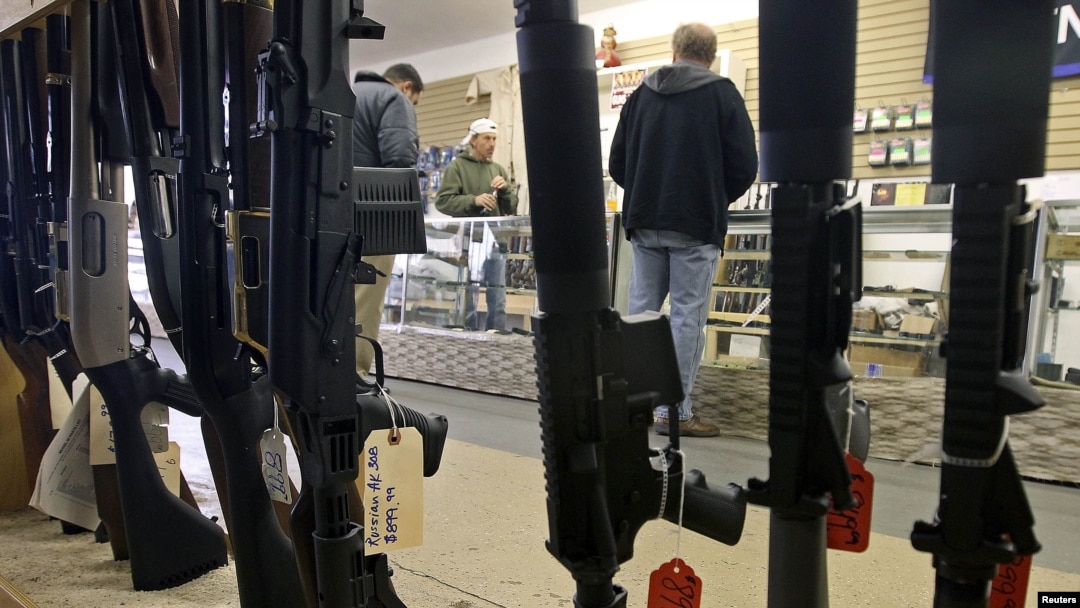WASHINGTON —
Every day in the United States, about 20 children are injured by firearms and require hospitalization, according to new research.
The research said that in 2009, there were 7,391 hospitalizations of victims under the age of 20 and that six percent of those admitted die as a result of their injuries.
“This study is a stark reminder of the devastating effects of gun violence,” said Adam Winkler, a law professor at UCLA and author of the book Gunfight. “Too often, we focus only on the number of people who die from gun violence. But so many who escape death also suffer lifelong injuries.”
The study says assaults accounted for the majority of hospitalizations, while the fewest were suicide attempts. Suicide attempts were the most likely to result in death.
The most common types of firearm injuries were open wounds (52 percent); fractures (50 percent); and internal injuries of the thorax, abdomen or pelvis (34 percent), according to the study.
Those injured by guns often require further treatment once they’re out of the hospital, the study said. This could include “rehabilitation, home health care, hospital readmission from delayed effects of the injury, and mental health or social services.”
"These data highlight the toll of gun-related injuries that extends beyond high-profile cases, and those children and adolescents who die before being hospitalized," said Dr. John Leventhal of the Yale School of Medicine in New Haven, in a statement. Leventhal co-authored the study.
Gun rights advocates had some questions about the study.
“Their definition of 'children' is quite expansive, said John Pierce, founder of Opencarry.org, a gun advocacy group promoting the right “to openly carry properly holstered handguns.”
Pierce noted he had not read the entire study, but said that study’s use of victims under 20 is misleading.
“I suspect that the reason the study includes adults up to age 20 is because they are able to sweep in the large number of gang-on-gang and drug-trade related assaults that occur in the 14 to 20 age bracket,” he said. “By sweeping these gang and drug related assaults into the number it makes the gravity of firearms 'injuries' to 'children' seem to be a far bigger problem than it really is.”
Pierce said gun rights groups continue to “spread the message of safety every gun owner should embrace.”
“Anti-gun activists will do anything to twist statistics in their attempts to demonize the mere possession of guns by law-abiding citizens,” he said.
According to the American Academy of Pediatrics, “the safest home for a child is a home without guns, and if there is a gun in the home, it must be stored unloaded and locked, with the ammunition locked separately.”
The study was published in the journal Pediatrics.
The research said that in 2009, there were 7,391 hospitalizations of victims under the age of 20 and that six percent of those admitted die as a result of their injuries.
“This study is a stark reminder of the devastating effects of gun violence,” said Adam Winkler, a law professor at UCLA and author of the book Gunfight. “Too often, we focus only on the number of people who die from gun violence. But so many who escape death also suffer lifelong injuries.”
The study says assaults accounted for the majority of hospitalizations, while the fewest were suicide attempts. Suicide attempts were the most likely to result in death.
The most common types of firearm injuries were open wounds (52 percent); fractures (50 percent); and internal injuries of the thorax, abdomen or pelvis (34 percent), according to the study.
Those injured by guns often require further treatment once they’re out of the hospital, the study said. This could include “rehabilitation, home health care, hospital readmission from delayed effects of the injury, and mental health or social services.”
"These data highlight the toll of gun-related injuries that extends beyond high-profile cases, and those children and adolescents who die before being hospitalized," said Dr. John Leventhal of the Yale School of Medicine in New Haven, in a statement. Leventhal co-authored the study.
Gun rights advocates had some questions about the study.
“Their definition of 'children' is quite expansive, said John Pierce, founder of Opencarry.org, a gun advocacy group promoting the right “to openly carry properly holstered handguns.”
Pierce noted he had not read the entire study, but said that study’s use of victims under 20 is misleading.
“I suspect that the reason the study includes adults up to age 20 is because they are able to sweep in the large number of gang-on-gang and drug-trade related assaults that occur in the 14 to 20 age bracket,” he said. “By sweeping these gang and drug related assaults into the number it makes the gravity of firearms 'injuries' to 'children' seem to be a far bigger problem than it really is.”
Pierce said gun rights groups continue to “spread the message of safety every gun owner should embrace.”
“Anti-gun activists will do anything to twist statistics in their attempts to demonize the mere possession of guns by law-abiding citizens,” he said.
According to the American Academy of Pediatrics, “the safest home for a child is a home without guns, and if there is a gun in the home, it must be stored unloaded and locked, with the ammunition locked separately.”
The study was published in the journal Pediatrics.


